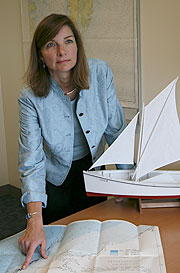Syracuse Views Fall 2025
We want to know how you experience Syracuse University. Take a photo and share it with us. We select photos from a variety of sources. Submit photos of your University experience by sending them directly to Syracuse University News at…

 Mariners call the continental margin off the North Carolina coast the “graveyard of the Atlantic.” Syracuse University’s first Professor of Interdisciplinary Sciences, Cathryn R. Newton, sees the area as rich with fossils for paleontologists, marine archeologists and historians to study.
Mariners call the continental margin off the North Carolina coast the “graveyard of the Atlantic.” Syracuse University’s first Professor of Interdisciplinary Sciences, Cathryn R. Newton, sees the area as rich with fossils for paleontologists, marine archeologists and historians to study.